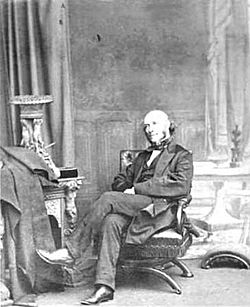William Allen Miller facts for kids
Quick facts for kids
William Allen Miller
|
|
|---|---|

William Allen Miller
|
|
| Born | 17 December 1817 |
| Died | 30 September 1870 (aged 52) |
| Nationality | English |
| Alma mater | King's College London |
| Awards | Gold Medal of the Royal Astronomical Society |
| Scientific career | |
| Fields | Chemistry Astronomy |
| Signature | |
William Allen Miller (born December 17, 1817 – died September 30, 1870) was an important British scientist. He made big contributions to both chemistry and astronomy. He was also a Fellow of the Royal Society, which is a very respected group of scientists.
Contents
Early Life and Education
William Allen Miller was born in Ipswich, Suffolk, England. He went to Ackworth School and later studied at King's College London. These schools helped him learn a lot about science.
A Career in Science
Miller became a professor of chemistry at King's College London. He took over this important role after another famous scientist, John Frederic Daniell, passed away. Even though he was mainly a chemist, Miller is best remembered today for his work in spectroscopy and astrochemistry. These were brand new fields of science during his time.
What is Spectroscopy?
Spectroscopy is a way to study light and matter. Scientists use it to figure out what things are made of. For example, they can look at the light from a star to learn what chemicals are in that star. Miller used this method to study stars.
Writing Textbooks
In 1855, Miller wrote a textbook called Elements of Chemistry, Theoretical and Practical, Part I Chemical Physics. This book helped many students learn about chemistry. He also worked on another book, Introduction to the Study of Inorganic Chemistry, but he became ill before it was finished. His friend, Charles Tomlinson, helped get it ready for publishing.
Awards and Recognition
Miller's work was highly respected. In 1845, he was chosen to be a Fellow of the Royal Society. This is a big honor for scientists.
In 1867, he won the Gold Medal of the Royal Astronomical Society. He shared this award with another scientist named William Huggins. They won it for their amazing work using spectroscopy to study what stars are made of. This helped scientists understand the universe much better.
Legacy
William Allen Miller passed away in 1870. He is buried with his wife, Eliza Forrest, at West Norwood Cemetery. They had a son and two daughters.
To honor his contributions to astronomy, a crater on the Moon was named after him. It is called Miller.

